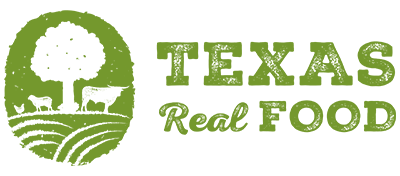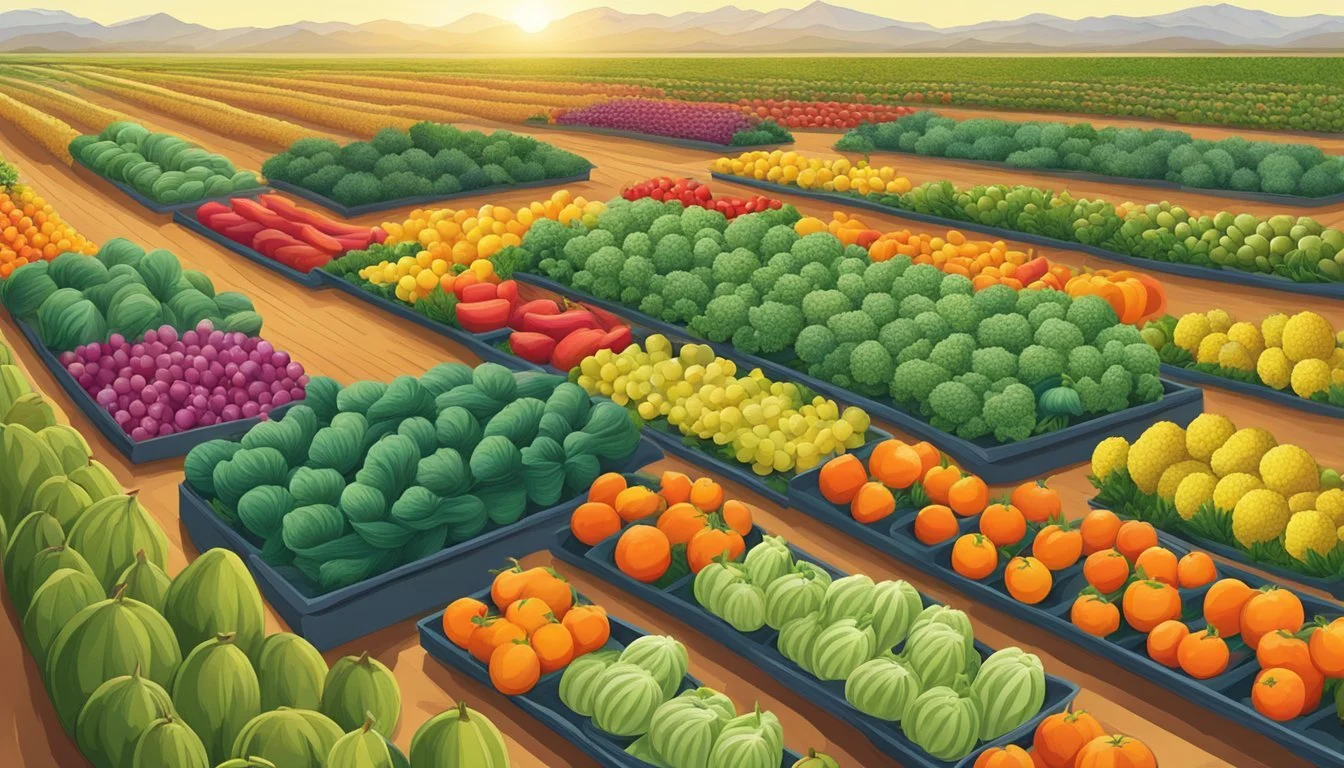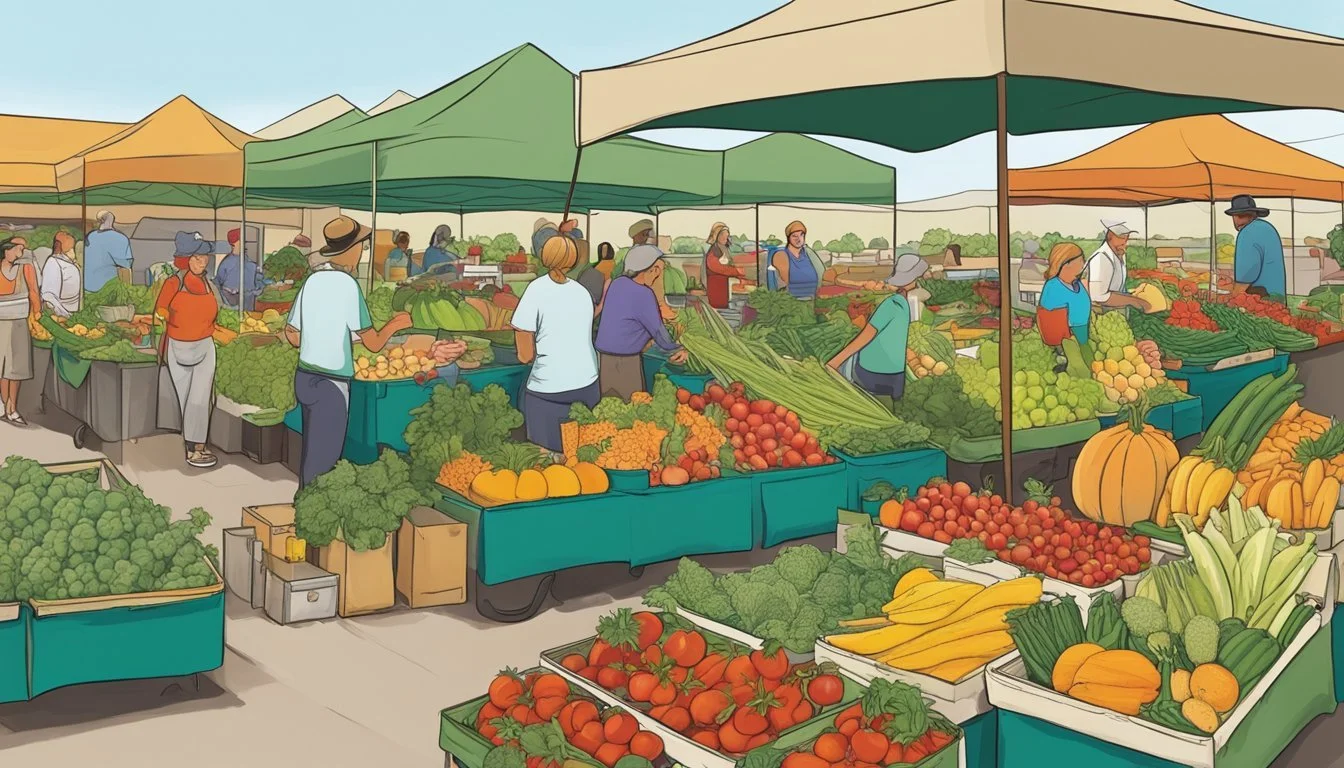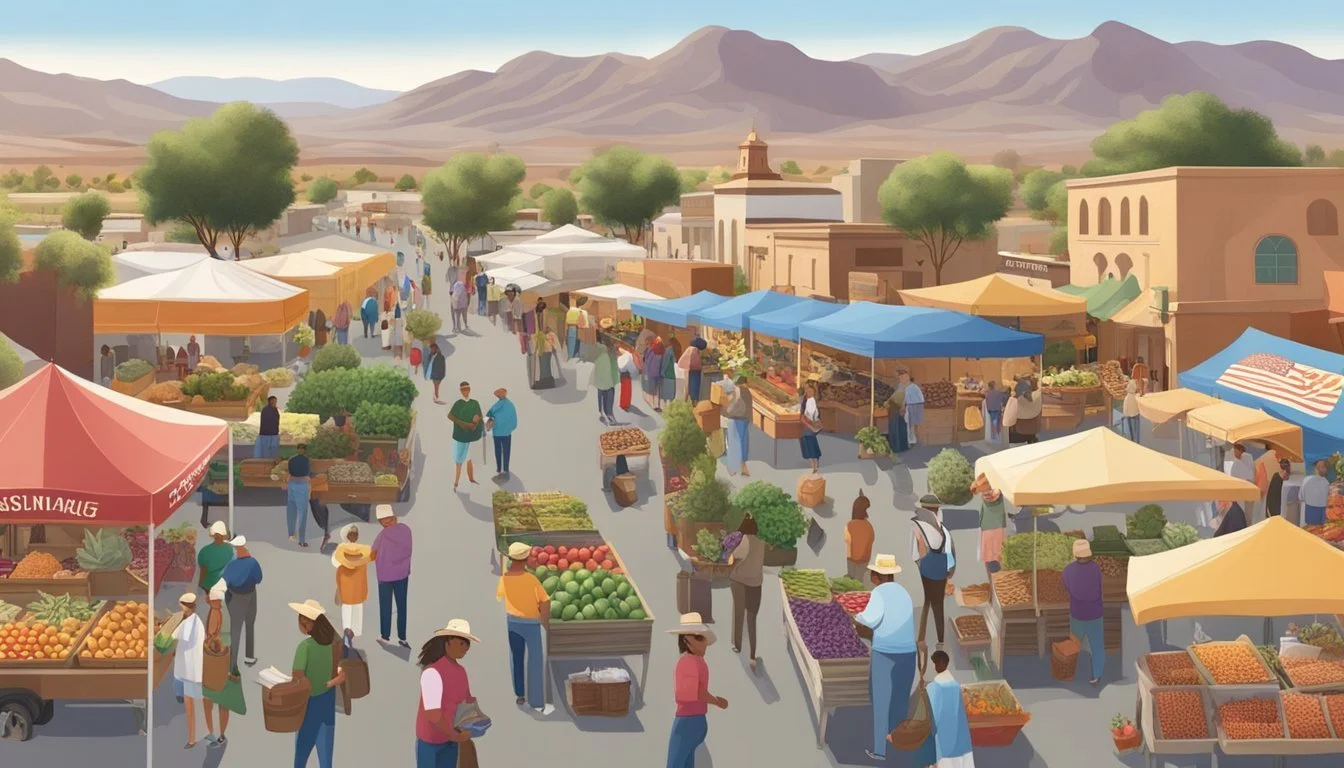Community Supported Agriculture (CSA) in Buckeye, AZ
A Guide to Local Farm Shares
Community Supported Agriculture, or CSA, is a model that reconnects local farmers with the surrounding community in Buckeye, Arizona. It allows residents to buy seasonal produce directly from local farmers by purchasing a share or membership. In turn, members receive regular deliveries or pickups of fresh, Arizona-grown fruits and vegetables. The CSA model fosters a mutually beneficial partnership where consumers gain access to nutritious, locally sourced food while providing farmers with a reliable market.
In Buckeye, CSA programs are gaining popularity as consumers become more conscious of their food origins and seek to support the local economy. By participating in CSAs, residents contribute directly to the sustainable growth of the area's small-scale agriculture. Moreover, the community gains the advantage of enjoying produce at peak freshness, often harvested within a day of delivery. This model not only bolsters local agriculture but also encourages healthier eating habits through the increased consumption of whole foods.
Farmers in the Buckeye area have embraced the CSA model as a means to secure upfront funding for their operations, allowing them to better plan their growing seasons. In turn, community members have the unique opportunity to experience the seasonality and variety of Arizona's agricultural bounty. CSA programs vary, with some offering options for the quantity and frequency of produce shares, thus catering to the diverse needs and preferences within the community.
Understanding CSA
Community Supported Agriculture (CSA) represents a partnership between farmers and the community, offering a subscription-based model that advances food security and fosters direct relationships between consumers and food production.
Origins and Philosophy
The concept of CSA is rooted in the desire to strengthen the bond between farms and consumers. This system emerged from concerns about food security and the sustainability of agriculture. It is grounded in the philosophy that food production should be more community-centered, with an emphasis on seasonal and local produce. Consumers become members of the CSA, committing to support the farm over a season, thus sharing both the risks and rewards of farming.
How CSA Works
In a CSA model, individuals purchase subscriptions, commonly known as shares, from the farm before the growing season. This upfront capital aids the farmers in planning and budgeting for the season. Shares typically include a variety of seasonal produce that consumers receive on a regular basis, often weekly or biweekly. By participating, community members directly contribute to food security through their support of the farm's ability to produce a consistent supply of food.
The transaction is straightforward: consumers buy a membership, and in return, receive a selection of seasonal products throughout the farming season. This model allows farmers to have a guaranteed market for their produce, and consumers enjoy fresh and often organic products directly from the source, fostering a deeper community connection.
Benefits of Joining a CSA
Joining a Community Supported Agriculture (CSA) program in Buckeye, AZ offers valuable benefits. It fosters closer connections between consumers, farmers, and the land, while promoting healthier eating and sustainable practices.
For Consumers
Direct access to fresh produce: Members typically receive a weekly or bi-weekly box of fresh, locally grown fruit and vegetables, which may contribute to improved nutrition and health. By involving themselves with a CSA, community members invest in their food security and gain exposure to a wider variety of seasonal produce.
Financial savings and local economy support: Consumers often find that CSA membership is cost-effective in comparison to buying similar organic produce at the market. They also take pride in knowing their financial commitment supports the local economy and preserves local farming heritage.
For Farmers
Predictable income: By selling CSA shares in advance of the season, farmers attain a degree of financial stability, which helps them plan and budget for the year ahead. This upfront investment by members can greatly alleviate financial pressure during leaner times.
Enhanced community engagement: Farmers benefit from direct relationships with their CSA members. This engagement can lead to deeper community ties, feedback for improving their produce selection, and even assistance during peak farming periods through volunteer work.
Environmental Impact
Sustainability: CSAs inherently promote sustainable and often organic farming practices. By reducing transportation requirements for food delivery, CSAs minimize their carbon footprint and preserve local land for agricultural use.
Increased biodiversity: Locally grown food does not require the same level of preservatives or packaging as store-bought items. Through the CSA model, farms avoid monoculture practices and instead can grow a variety of crops, enriching local biodiversity and soil health.
CSA Models in Buckeye, AZ
Community Supported Agriculture (CSA) in Buckeye, AZ, offers residents a way to purchase seasonal produce directly from local farmers. By subscribing to a CSA, consumers receive a variety of farm-fresh products while supporting the farming community.
Traditional CSA Model
The traditional CSA model operates on a subscription basis, where consumers buy shares of a farm's harvest in advance of the growing season. In Buckeye, AZ, small, independent farmers provide shares that typically consist of a weekly box of vegetables and other farm products. This model fosters a direct connection between farmers and the community, promoting local agriculture and providing members with a selection of fresh, seasonal produce.
Market-Style CSA Model
Market-style CSA, as found in Buckeye, allows members more flexibility in their selection of produce. Consumers use a pre-paid membership card and can choose their products either directly at the farm store or from a collaborative local market. This model offers convenience and choice, enabling members to apply their CSA membership funds to purchase the desired amount of produce while still supporting local farmers and enjoying a bounty of fresh, locally grown goods.
How to Choose a CSA
When selecting a Community Supported Agriculture (CSA) program, consumers should consider their household needs, the variety of offerings a CSA provides, and the level of commitment involved. A well-chosen CSA can greatly enhance the enjoyment of fresh, seasonal food directly from a farm.
Assessing Your Needs
Consumers must first assess their consumption habits. Factors such as the number of people in the family, typical dietary preferences, and the desired frequency of fresh produce should be considered. This helps in determining the appropriate size of CSA share. Questions to ask might include:
How many meals per week do I cook at home?
What volume of fruits and vegetables can my family realistically use?
Is there a need for specialty items such as meat, eggs, cheese, or flowers in addition to vegetables?
Evaluating a CSA's Offerings
Evaluating the selection that a CSA offers is crucial. CSAs may provide a diverse range of fresh food—from various vegetables and fruit to meat and eggs. Some even offer cheese or hand-picked flowers. A prospective member should look at the CSA's product list and consider:
Seasonal availability of produce
Diverse and sufficient selection to meet personal preferences
Option for add-ons or special requests
It's advisable to visit the CSA or their website to understand the full scope of what they provide.
Understanding the Commitment
Joining a CSA means entering into a relationship with a local farming operation. This involves a membership fee and an agreement to the seasonal nature of the produce. Consumers should be aware of:
The length of the season and timing of produce availability
Pickup locations and whether the schedule aligns with their routine
The upfront fee structure and any additional costs
Satisfaction comes from supporting local farming, but one should be informed about the commitment before joining to ensure alignment with their lifestyle.
By carefully considering these aspects, consumers can make a confident decision in choosing a CSA that satisfies their need for fresh, local, and seasonal food while supporting family farming operations.
CSA Member Experience
Joining a CSA in Buckeye, AZ, offers a tailored experience that connects consumers with local farmers. Members play an active role in the food system, supporting sustainable agriculture while enjoying fresh, seasonal produce.
What to Expect
When one becomes a CSA member, they can anticipate weekly or bi-weekly pickups of fresh produce directly from the farm. The shares typically include a variety of vegetables, and sometimes other farm products such as fruits, herbs, and eggs. Farmers may offer flexible share sizes to meet different household needs. For instance, a small share might be ideal for individuals or couples, while a larger one could be more suited for families.
Pick-up Day:
Members receive notifications of pick-up locations and times.
They collect their shares from designated spots, which might include the farm itself or other community spaces.
Produce Variety:
A seasonal selection dependent on current harvests.
A mix of familiar staples and occasionally new vegetables to explore.
Maximizing Your CSA Benefits
To make the most of their CSA membership, consumers should:
Learn Storage Tips: Understanding how to store different types of produce can extend their shelf life.
Experiment with Recipes: Farmers often provide recipes that highlight the week's harvest, encouraging members to try new dishes.
Share Feedback: Building a relationship with the farmer allows members to ask questions and give input on produce selections.
Additionally, members can:
Utilize provided resources to learn about each type of produce including potential health benefits and cooking methods.
Engage with provided community networks for recipe sharing and storage advice.
Community Building Activities
Becoming part of a CSA is more than receiving produce; it's about being part of a community that supports local farmers and sustainable practices.
On-Farm Events: Members may be invited to farm events, which are excellent opportunities to meet the farmer, see where their food comes from, and connect with fellow CSA members.
Volunteer Opportunities: Some CSAs offer the chance for members to volunteer at pick-ups or on the farm, further strengthening the consumer-farmer relationship.
Farmers Market Interaction: CSA shares might also be picked up at the local farmers market, offering additional ways to engage with the wider local food community.
Through these interactions, CSA members in Buckeye cultivate a network that values food origins, its producers, and the collective benefit of supporting local agriculture.
Supporting CSAs Beyond Membership
While becoming a member of a CSA is integral to its success, individuals in Buckeye, AZ, can further champion the vitality of local food systems through additional means of support.
Promoting CSA Awareness
Community Involvement: Residents can facilitate growth in CSA participation by leveraging local networks. They can share CSA benefits with friends and family and utilize local food directories to connect more consumers with CSAs.
Utilize Local Media: Write articles or blog posts for local newspapers or community websites.
Social Media Campaigns: Use platforms like Facebook or Instagram to highlight CSA successes.
API Integration: Developers can incorporate CSA information into apps or websites using APIs that link to local food directories.
Volunteering and Donations
Volunteering Time: Members and non-members alike can offer their time to assist with farm operations or distribution days, which not only supports the CSA but also strengthens community bonds.
Material and Financial Contributions:
Donations: Financial gifts can help support CSA infrastructure or provide shares for those in need.
Food Bank Partnerships: CSAs can partner with local food banks to donate excess produce, supporting both the community and the local economy.
By engaging in these activities, individuals contribute to the sustainability and resilience of Community Supported Agriculture and reinforce the buy local movement.
Challenges Facing CSAs
Community Supported Agriculture (CSA) models in Buckeye, AZ, confront both economic, environmental pressures, and the ongoing task of maintaining a steady membership base. These challenges necessitate responsive strategies for sustainability.
Economic and Environmental
CSAs face significant economic challenges. Farmers must set prices that cover all costs, from seeds to labor, while remaining attractive to community members. Moreover, they must do so in a manner that considers the :
Seasonal nature of agricultural output.
Impacts of climate change on production cycles.
Environmental challenges compound economic pressures. Local CSAs in Buckeye operate under the specter of water scarcity and rising temperatures. Here's a glance at these factors:
Environmental Factor Impact on CSA Water Scarcity Higher irrigation costs Extreme Heat Restricted growing seasons Climate Variability Unpredictable yield outcomes
Member Retention
Maintaining and growing CSA membership involves ensuring customer satisfaction. CSAs must deliver on the promise of high-quality, locally-sourced produce. Key to this promise is a reliable database that includes accurate data on:
Members' preferences
Seasonal availability of produce
Transparent cost structures
Member retention efforts are put to the test by various challenges:
Meeting diverse customer expectations for produce variety and quality.
Ensuring consistent communication, often through digital platforms, to inform members of availability and CSA happenings.
Addressing logistical difficulties in distribution to ensure timely and efficient delivery.
Farmers need to navigate costs associated with maintaining such systems while upholding the integrity of their produce and services.
Future of CSAs in Buckeye, AZ
The growth and sustainability of Community Supported Agriculture (CSA) in Buckeye, Arizona reflect a commitment to local food systems and innovative agricultural practices.
Trends and Growth
Data indicates a rising interest in CSA programs within Buckeye, AZ, which resonates with a statewide increase observed from 2007 to 2012. During that period, Arizona experienced a 77 percent growth in farms offering CSAs. Buckeye's CSA landscape benefits not only from this statewide trend but also from increased community engagement and the desire for locally sourced food. Innovations in methods and technology, such as mobile platforms and user-friendly APIs for easy access to subscriptions, are set to potentially expand the reach and efficiency of CSA programs.
Key Growth Drivers:
Desire for locally sourced, sustainable food
Increase in small-scale farms and producers
Technological integration into CSA management
Innovation in Agriculture
In Buckeye, trends towards sustainability and innovation in agriculture intertwine closely with the future of CSA programs. New methods, including precision agriculture, water-conserving techniques, and ecological pest management, are being adopted. With Arizona being a hub for innovation, Buckeye's agricultural participants are exploring advancements such as data analytics to optimize crop yields and improve distribution efficiency. These agricultural developments do not only enhance sustainability but also ensure the continued success of CSA models in the community.
Innovative Focus Areas:
Water conservation techniques
Use of data analytics for efficient farming
Integration of smart technology to connect producers and consumers









